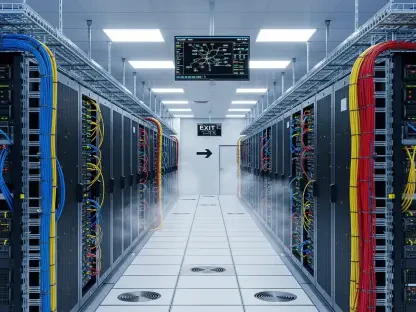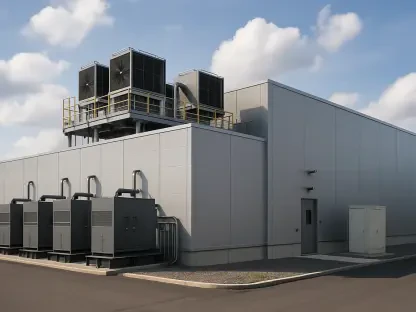Recent developments in global trade policy have significantly impacted the trajectory of IT spending, disrupting prior expectations and shaping new investment strategies. This scenario largely stems from the United States’ unpredictable approaches to tariffs under President Donald Trump, which have caused a ripple effect throughout the IT sector worldwide. Forecasts that positioned the IT industry for substantial growth have been reconsidered, highlighting the complex interplay between political actions and technological advancement. At the same time, the appetite for artificial intelligence (AI), specifically in AI-optimized servers, is seeing unparalleled momentum, offering a silver lining amid economic uncertainties. As professionals navigate these tumultuous times, adapting strategies becomes crucial for harnessing opportunities in emerging tech sectors.
Trade Policy Turbulence and IT Spending Dynamics
Adjustments in IT Powerhouses
Initial projections anticipated IT spending to reach $5.61 trillion, accounting for a near 9.8 percent growth globally. However, shifts in currency exchange rates and skepticism from Chief Information Officers (CIOs) have resulted in a more subdued 7.9 percent increase. This hesitance is attributed to the US’s evolving trade policies, particularly concerning nascent tariffs with the European Union, which have left many firms apprehensive. The hesitation reflects not just a reaction to market conditions such as GDP or interest rates but a broader concern about the long-term implications and potential costs of unfinalized tariff agreements. Organizations are strategically reevaluating their expenditure, cautiously advancing IT projects, and prioritizing current budget initiatives over novel expansions.
Tech Products and Cost Implications
As CIOs consider the ramifications of potential tariffs, their focus diverts towards cost-saving measures, leading to suspended projects in IT hardware, infrastructure, and supply chains. Banks like Jefferies have noted how these changes could steepen tech product prices post-August 1. Despite such challenges, the cloud and managed services sectors have maintained a steadier pace of growth, owing to their inherent flexibility and lower dependency on physical components affected by tariffs. This stability offers a refuge for businesses looking to sustain IT operations without succumbing to the volatile pricing associated with traditional hardware investments, supporting a reevaluation of strategies that optimize remote and digital solutions amid economic uncertainties.
Shifting Priorities Toward AI Investments
AI Hardware Breakthrough
Despite the broader slowdown in IT spending, there’s a marked shift towards AI-optimized servers, with investments in this segment projected to triple against conventional server growth. John-David Lovelock from Gartner illustrates how the demand for AI servers is flourishing, propelled by cloud service providers and significant AI corporations redefining market dynamics. Traditional servers have seen decades of development through globalization, establishing a robust service network, yet AI technology is commanding industry focus due to its potential to revolutionize computational efficiency and intelligent data processing. This trend highlights a divergence from classical expansion in IT hardware, urging industry leaders to align resources with cutting-edge innovations.
GenAI and Market Growth
Amid the proliferation of AI technology, the market sees numerous participants entering the fray. Lovelock underscores that while many companies venture into AI, this isn’t indicative of an investment bubble; rather, it typifies the growth conditions of an emerging market, with some entities poised for expansion while others might not succeed. The emergence of Generative AI (GenAI) servers, developed to support dynamic AI models, signifies a frontier in computing capabilities. These servers gain traction as foundational tools for future tech applications, presenting organizations with opportunities to explore advanced machine learning techniques and accelerate R&D in AI-driven projects.
Future Considerations and Strategic Insights
As CIOs reconsider potential tariffs, they pivot towards cost-efficiency, resulting in pauses for IT hardware, infrastructure, and supply chain projects. Financial institutions, including Jefferies, have observed potential hikes in tech product prices post-August 1 due to these shifts. Despite such hurdles, the cloud and managed services sectors continue to grow, thanks to their adaptability and reduced reliance on physical components, which are more vulnerable to tariffs. This consistent growth in cloud and managed services provides businesses with a reliable option to maintain IT operations without facing unpredictable pricing linked to traditional hardware investments. Consequently, companies explore ways to optimize remote and digital solutions amidst economic uncertainties. They find solace in the stability and flexibility these services offer, helping them navigate through the changing landscape and reevaluate their strategies for growth and innovation in turbulent economic times.









